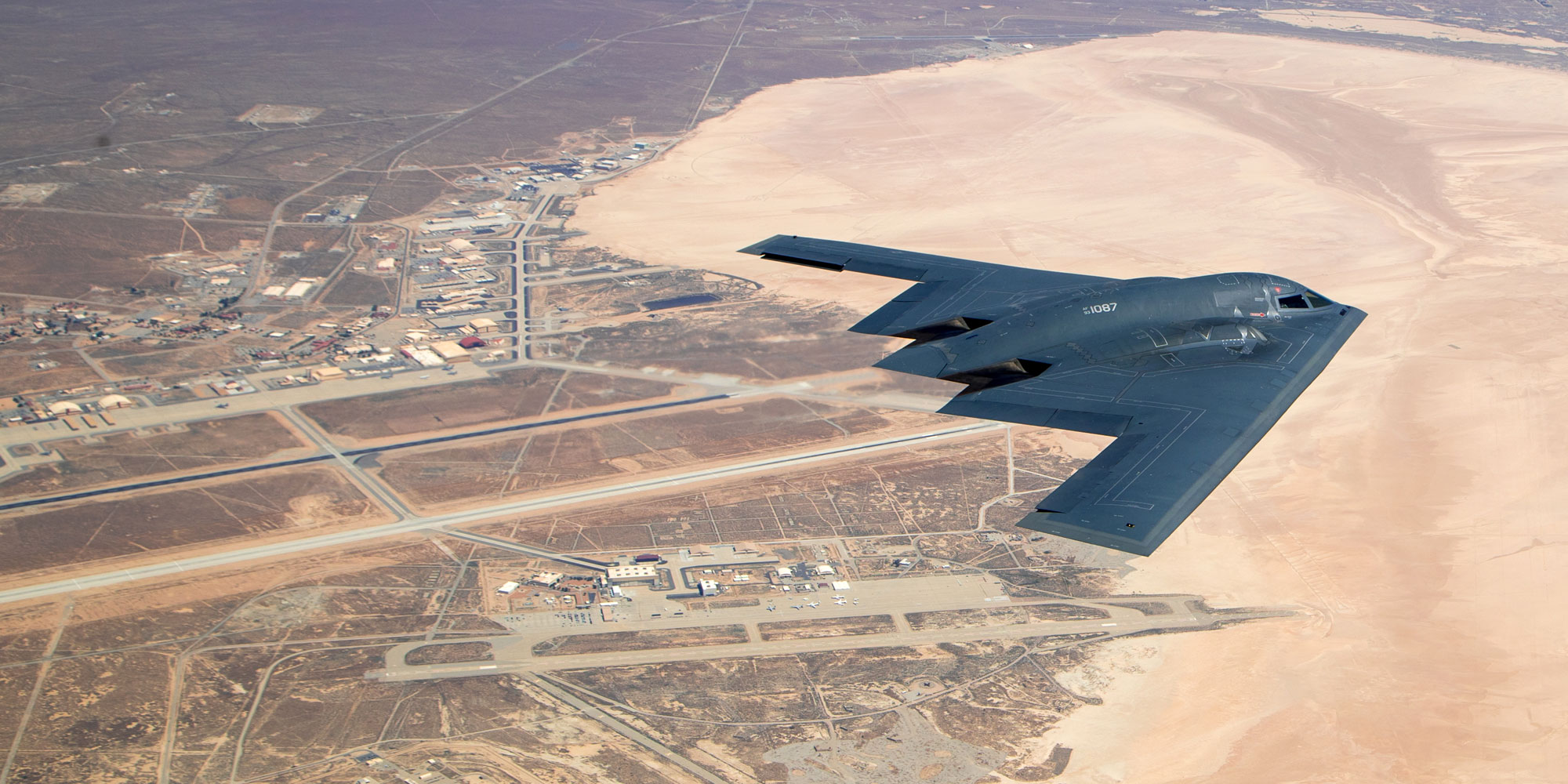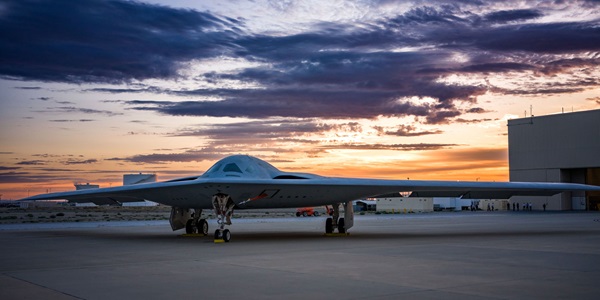Legendary Stealth
A Legacy of Pioneering Tech to Protect the Warfighter

By Lauren Sarmir and Samantha Smith
For generations, Northrop Grumman has pioneered stealth technology to keep military aircraft virtually unseen. Stealth aircraft are designed with unique physical characteristics and manufactured with low observable technology to appear as small as possible on radar screens, all in an effort to protect the warfighter and mission.
Thanks to invaluable lessons learned dating back to our co-founder Jack Northrop’s 1940 creation of the YB-49 flying wing aircraft, Northop Grumman continues to push boundaries in stealth as the prime contractor delivering the B-21 Raider, the world’s first sixth-generation aircraft, to the U.S. Air Force.
Out of the Blue
In 1976, one of our heritage companies, Northrop Aircraft Inc., was awarded Tacit Blue, a DARPA-initiated program, to expand on low observable development with a focus on avoiding detection on enemy radar. With its low, “all-aspect” radar signature, Tacit Blue demonstrated that such an aircraft could loiter over and behind the battlefield without fear of being discovered by enemy radar. Using advanced sensors, it could also continuously monitor enemy forces — even through clouds — and provide timely information through data links to a ground command center. Moreover, these sensors functioned without revealing the location of the aircraft. The experimental aircraft took its first flight in 1982 and flew another 134 times before the program ended in 1985.
Tacit Blue, and the many stealth, radar and aerodynamic innovations it incorporated, laid the foundation for development of our B-2 Spirit.
Legendary Stealth
Before the B-2 took to the skies with its unmistakable silhouette in 1989, our team of engineers and designers had to invent many components from scratch. These included tools, a software laboratory, composite materials, special test equipment and 3-D modeling and computer systems, all of which came together to create an engineering marvel. The revolutionary blending of low-observable technologies with high aerodynamic efficiency and large payload gives the B-2 important advantages over existing systems. Three decades later, the B-2 remains a center point of the nation’s stealth bomber fleet.
Currently, the B-2 is the only long-range penetrating stealth bomber in the U.S. arsenal protecting our service members, nation and global allies. We are partnering with the U.S. Air Force to diligently modernize the platform for the 21st century through sustainment and digital transformation.
Forging The Future of Stealth
Our company remains at the forefront of stealth technology. Building on insights from systems like Tacit Blue, we are continuing to trailblaze in the battlespace with the B-2 Spirit and, soon, the B-21 Raider.
The B-21 Raider is setting new standards with sixth-generation technology the world has never seen before. On the outside, next-gen stealth and advancements in low-observable processes will make the aircraft easier and less costly to maintain. Inside, the B-21’s open architecture will enable rapid upgradability from inclusion of new weapons to software upgrades thanks to advanced networking capabilities and successful cloud environment migration. With these innovations, the B-21 is designed to meet evolving threats for decades to come.
In November 2023, the Air Force confirmed that the B-21 is executing flight test, a critical step that will further validate our digital models and moves us another step closer to reaching operational capability.
Learn more about our legacy in aeronautics, as well as what it’s like to define possible by working at Northrop Grumman.
Related Stories

What You Need to Know About the B-21

Ways We Support the Military
Northrop Grumman is committed to supporting our military communities.

200 Feet Underground
Pete was roughly 200 feet underground when planes hit the Twin Towers in New York City on Sept. 11, 2001.